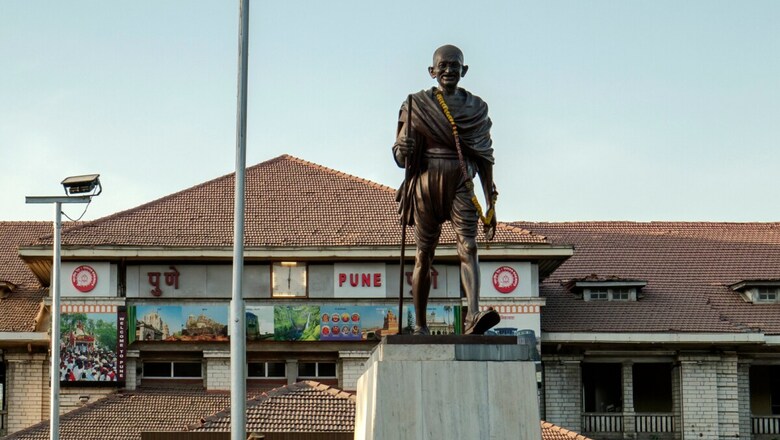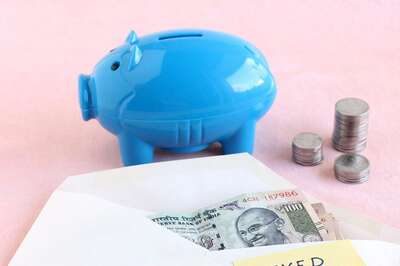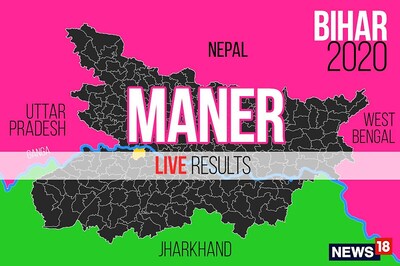
views
In Infra Vaani, noted urban infra expert Akhileshwar Sahay dissects infrastructural challenges of Indian cities and offers solutions. This week, he looks at Pune, his home.
My first tryst with Pune happened in 2000, when I was taking baby steps towards becoming an urban transport expert under the tutelage of Pune-based P.G. Patankar, the grand old man of India’s urban transport. Patankar was universally acclaimed for shepherding the impeccable BEST bus operations in Mumbai for decades and was the man whom Morarji Desai as the Prime Minister had entrusted the unenviable task of improving the operations of the Delhi Transport Corporation (DTC).
When Patankar entrusted me with the responsibility of leading the ‘International Conference: Nurturing Together Sustainable Cities in Asia’ (the conference name was given by this author) organised by the Pune Municipal Corporation (PMC), Pimpri-Chinchwad Municipal Corporation (PCMC) and their sister city Bremen of Germany in the run up to the ‘World Summit on Sustainable Development’ (RIO+10) in Johannesburg, South Africa, little did I know that I would soon be a proud “Punekar”.
I made Pune my home on January 1, 2001.
It was a dream city for Punekars then – ‘a smart and sustainable city in the truest sense’.
Pedestrian and cyclists romanced city roads, the elderly enjoyed conversations sitting under centuries-old lush green trees, clean potable water was in plenty, solid and liquid waste management was manageable and Punekars took breathing clean air for granted. Those days one seldom used fans at home even during summer.
Above all, Pune roads were clean and safe.
These were enough reasons for people from different parts of the country to make Pune their home. The city that Peshwas built – it was the nerve centre of the freedom movement under Bal Gangadhar Tilak and Gopal Krishna Gokhale – and which has been the cultural capital of Maharashtra got a new name, ‘Oxford of the East’. Pune was fast growing into a hub of hard (manufacturing) and soft (Information Technology) industries, a preferred destination for research and development, and one of the largest bases for the Indian defence forces.
Cut to 2022. The past perfect has evaporated with the past.
ALSO READ | Pune Airport an Enduring Shame. Everybody Knows About it, But Does Nothing
In last two decades, the population of Pune and Pimpri-Chinchwad has exploded; the World Population Review puts it around 6.9 million.
Pune is now India’s largest non-capital city and amongst top 10 metropolises, contributing 3 per cent (approx.) to the national GDP. As per McKinsey Global Institute’s April 2010 report ‘India’s Urban Awakening: Building Inclusive Cities, Sustaining Economic Growth’: ‘By 2030, Pune will be 6th largest Indian city with 10 million population and $76 billion GDP.’
But ask any Punekar and they will tell you that all is not well despite the city scoring high on the official ‘Ease of Living Index’ and often being named among one of the ‘cleanest cities’.
There is nothing smart about this smart city any longer.
Pune is at crossroads – its growth potential stymied, its intra- and inter-generational equity and future sustainability face existential threat. The signs that the city is in a decline are visible.
The problems facing Pune are multi-pronged, but one that hurts the most is Gross Infrastructure Deficit. And, talking of infrastructure woes, nothing hurts more than the gridlocked urban transport.
First, Pune’s existing road density (varying between 4 to 8 km per sq km) is woefully short of Delhi’s average road density of 22 km per sq km and way below the ideal 12 sq km for a metro city.
Second, insufficient, inferior and unreliable bus transport by the Pune Mahanagar Parivahan Mahamandal Ltd (PMPML) accounts for just 10 per cent of the commuter load.
Third, most Punekars use personal cars, two-wheelers for transport. Autorickshaws and taxis further crowd the limited road space. Heavy vehicular traffic on narrow crowded roads means one is back to horse-carriage days.
Fourth, the city roads are riddled with potholes; they are not pedestrian- and cyclist-friendly. I for one do not own a car and can safely say Pune roads are death traps for walkers.
Fifth, Pune was the first city to go ahead with a Bus Rapid Transit System (BRTS) in 2006. But faulty design, poor implementation, non-adherence to basic safety norms and poor bus services killed the BRTS. It is often said, ‘BRTS failed Pune’. Contrary is the truth – ‘Pune and Pimpri-Chinchwad corporations along with PMPML failed BRTS’. The two municipal corporations failed to provide the right infrastructure while PMPML miserably failed to provide quality buses, frequent services and well-trained staff. BRTS cost Punekars Rs 1500 crore. Its failure led to the shelving of an ambitious plan of building a 100-km-long corridor.
Sixth, road widening is touted as the panacea for Pune’s urban transport gridlock. But I strongly believe that is a costly and environmentally unsustainable affair. In 2021, Pune and Pimpri-Chinchwad added 170,228 and 108,873 vehicles. Given Pune’s mixed traffic, a new road lane with traffic signals can accommodate 800-900 PCE (Passenger Car Equivalent)/ hour. To cater to new vehicles every year, Pune will need 15-20 new road lanes per annum. The US paid dearly for taking this self-annihilation route.
Seventh, is rail-based urban transport (Metro rail) a solution to the mess?
Answer is: may be, may be not.
Pune planners forgot to look at metro rail solution when the city needed it, instead they toyed with non-solutions including the now infamous ‘Skybus’. Politics overruled common sense. Pune failed to take advantage of the central government policy shift in 2011, allowing 2 million-plus cities to have metro rail. Metro rail construction began much later in Pune compared to smaller cities like Jaipur and Kochi.
Currently, 54 km of metro rail is under construction in Pune – two corridors totalling 31 km by Maharashtra Metro Rail Corporation (Maha-Metro) and the rest through PPP by Tata Realty Infrastructure and Siemens. Both projects are inordinately delayed.
Recently, the Prime Minister inaugurated a 12-km stretch constructed by Maha-Metro. This is too little, too late. Pune has grown haphazardly into an urban sprawl and its population threatens to swell over 10 million soon.
The city needs an urban transport hierarchy with minimum 200-250-km metro rail at the top, well supplemented by quality, non-polluting urban bus system, well-integrated with para-transit and non-motorised system.
Unless Pune has a well-oiled and well-functioning safe, convenient, comfortable public transport that the rich take pride in using and the poor can afford, there is a no sustainable future for Punekars.
The central government, recognising the economic benefits of metro rail, in its Metro Rail Policy in 2017 had set cities free, by abolishing the unattainable 8.2 per cent Financial Internal Rate of Return (FIRR) for approving projects and replacing it with the much desirable 14 per cent Economic Internal Rate of Return (EIRR). Pune city planners are five years late to take advantage of this.
But it is not over till it is over. Infrastructure creation in Pune has not reached the expiry date. Time to reimagine and reinvent Pune urban transport is now. Tomorrow will be too late.
Akhileshwar Sahay is a noted urban transport infrastructure expert and President, advisory services at BARSYL, a consulting firm. The views expressed in this article are those of the author and do not represent the stand of this publication or the company he works with.
Read all the Latest Opinions here




















Comments
0 comment